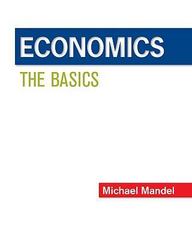Question
1. An example of a cooperative game is: a. when plans made by firms are known as game strategies. b. a game in which firms
1. An example of a cooperative game is:
a. when plans made by firms are known as game strategies.
b. a game in which firms will not negotiate in any way.
c. companies colluding in order to make higher-than-normal rates of return.
d. the manner in which one oligopolist reacts to a change in price made by another.
2. Which of the following factors does not cause product differentiation?
a. location of firm
b. superior product
c. advertising
d. research and development
3. Edward Chamberlin and Joan Robinson are best known for their analysis of:
a. perfect competition.
b. monopolistic competition.
c. natural monopoly.
d. monopolies.
4. The only market structure that does not have control over its price is:
a. competition.
b. monopolistic competition.
c. oligopoly.
d. monopoly.
5. Cartels are inherently unstable because:
a. any one firm can make additional profits by selling additional output at a price below marginal cost.
b. of the disincentive to cheat.
c. firms behave like competitive firms facing a market price.
d. any one firm can make additional profits by selling additional output at a price above marginal cost.
6. The success rate of cartels is slim because:
a. participation is secretive.
b. the agreed price is too low.
c. cheating is likely to occur due to profitability.
d. all cartels are designed to fail.
7. Which of the following products would be the most differentiated?
a. cotton sold to a fabric maker
b. fabric sold to a garment maker
c. garments sold to a garment distributor
d. garments sold to a retail customer
8. Repeated games tend to lead to more nuanced _____ strategies.
a. static
b. tribal
c. trigger
d. None of the answers is correct.
9. In the long run, a monopolistically competitive firm charges a higher price than a competitive firm. The reason for this difference is that monopolistically competitive firms:
a. act like monopolies and restrict output.
b. have higher costs associated with advertising and product development.
c. need to earn economic profits in the long run to justify their expenditures on product development.
d. have no interest in consumer well-being.
10. Assume that economic profits are earned by firms in monopolistic competition. What happens in the long run?
a. new firms enter, the market supply rises, and the price to each firm falls until normal profits occur
b. new firms enter, the market supply rises, and the price to each firm falls until P = MC for each firm
c. new firms enter, and demand to each firm rises until economic profits are eliminated
d. new firms enter, and demand to each firm falls until economic profits are zero
Step by Step Solution
There are 3 Steps involved in it
Step: 1

Get Instant Access to Expert-Tailored Solutions
See step-by-step solutions with expert insights and AI powered tools for academic success
Step: 2

Step: 3

Ace Your Homework with AI
Get the answers you need in no time with our AI-driven, step-by-step assistance
Get Started


